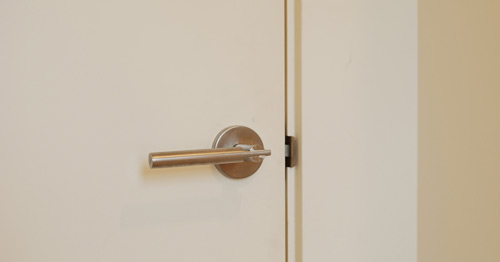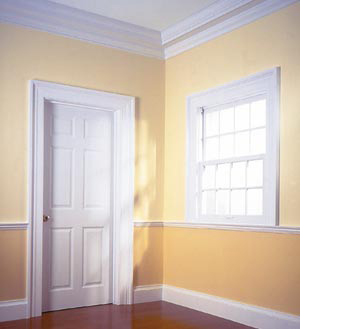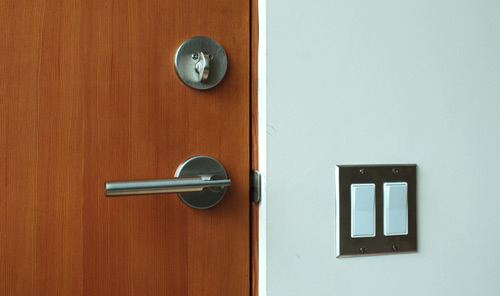
Back in the old days, wood trim was used not just for decoration purposes, but also to cover up cracks and resolve differences between materials. It started out quite simple really, the Shaker style used a single piece of trim between the door jamb and the wall to cover the resulting air gap and create a clean border around the door.
 Over the years however, trim became a victim of fashion and by the time the craftsman style was done with it, trim was exaggerated to the point of being superfluous. The trim on top of trim on top of trim became visual clutter. Unfortunately in our current time, the remnants of the craftsman style continue to influence design and nothing is more disturbing to us than a lifeless spec home with ornamental “craftsman style” stick-on trim details.
Over the years however, trim became a victim of fashion and by the time the craftsman style was done with it, trim was exaggerated to the point of being superfluous. The trim on top of trim on top of trim became visual clutter. Unfortunately in our current time, the remnants of the craftsman style continue to influence design and nothing is more disturbing to us than a lifeless spec home with ornamental “craftsman style” stick-on trim details.
The philosophy of modern architecture prescribes that design be everything it needs to be and nothing more. In the contemporary home, with modern materials and methods, there isn’t much need for trim everywhere. Current construction methods allow the drywall to meet the door jamb via a strip of ‘L’ metal, thereby eliminating the air gap and making trim obsolete. The modern door jamb is clean, unencumbered and is everything it needs to be. There are many ways to design and construct such a detail, today’s post covers a door jamb detail that we at BUILD LLC have found useful. You know the drill; let us know what you like/don’t like and share what you know.










